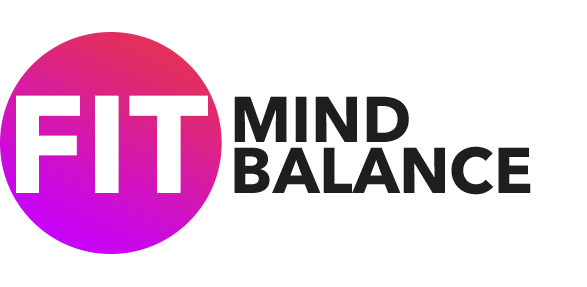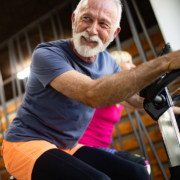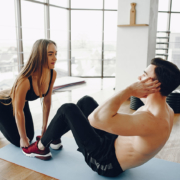1. EATING LESS ISN’T MORE
While restrictive dieting is frowned upon in contemporary fitness culture, it definitely still exists. I know this because I’ve been there. I’ve been the ‘restrictive eater’ and have suffered the consequences (uncontrollable bingeing, constant cravings, food obsessiveness).
At the end of the day, caloric deficits have their place and definitely shouldn’t be dismissed, but there are a time and a place where a deficit should be implemented. There is also a guideline as to how severe this deficit should be.
Quite often, unknowingly, girls are placing themselves in deficits that are so much more extreme than what they need to be to get the results that they’re searching for. In some cases, these extreme deficits can even be doing more harm than good!
Be wary of your food intake girls, just like too much food can cause damage, so can too little.
2. ONE TRAINING METHOD DOESN’T SUIT EVERYONE
It’s okay to ask for advice and it’s okay to learn from what others promote, but don’t get stuck in the mindset that only one training method is suitable to get you the results and physical changes you so desire.
Different physiques respond differently to different training methods. Be open to trialing different methods until you find what works for you, your physique, and your goals!
3. LIFTING WILL GIVE YOU ALL THE PHYSIQUE CHANGES YOU HOPED CARDIO WOULD … BUT DIDN’T
At the beginning of my health and fitness journey, I spent years doing cardio. I was your typical cardio bunny – cardio was life! Every day I would hit the gym for my hour of cardio. As I was stepping away on the Stairmaster, I would picture my dream physique and increase the resistance to work harder and harder. It’s safe to say at that time I made very little physical changes to my physique.
Again, I’m not saying cardio doesn’t have a place in helping you reach your goals, but so does weight lifting. It wasn’t until I started hitting the weight room in the gym that I started to see true changes in my physique and shape!
4. TAKING THE TIME TO UNDERSTAND MACROS IS WORTH IT BECAUSE FLEXIBLE DIETING IS LIFE CHANGING
Understanding and tracking macros can be a daunting experience. You don’t want to get it wrong and spend a week over or under eating – I get it! But taking the time to understand how to track macros and implement flexible dieting is going to make such a difference to your everyday eating habits. It allows so much more flexibility and balance whilst still hitting your macros and calories to reach your goals.
If you’re someone who still hasn’t had the courage to move from a meal guide, I strongly recommend you give tracking macros a go – even if it’s only one day a week. I can promise you it won’t take long to get the hang of it and once you do you’ll have so much more flexibility!
5. JUST BECAUSE SOMEONE ELSE EATS ‘THIS MUCH’ OR ‘THIS LITTLE’ DOESN’T MEAN YOU HAVE TO, OR SHOULD
We’ve all been there – “Sally eats 4000 calories a day and looks incredible so that’s what I should eat” or “Suzi only eats 800 calories a day and looks phenomenal so that’s what I should eat”.
Just because someone eats a certain way, it does not mean you should. Every individual is so, so different and has such a different story to their dieting history. Comparing yourself to someone who isn’t you; and trying to replicate what they do, is going to cause you so much grief. Find what works for you and stick to it. 6. WEIGHING IS WORTH THE EFFORT
‘Guestimating’ food is a difficult concept. Don’t get me wrong – there will be occasions where you may be out and need to ‘guestimate’ portion sizes and that’s okay. But where you can – take the time to weigh your food!
Weighing your food alleviates any room for error. Whilst we all ‘think’ we’re confident in eyeballing food quantities, most of the time if you were to actually weigh the same amount of food our ‘guestimation’ would be so off!
Leave as little room for error as possible – weigh your food girls!
7. TAKING PHOTOS IS WORTH IT
Starting a fitness journey can be hard, and taking photos at a time where we aren’t feeling great about ourselves can be even harder. But I promise you girls, you will regret not taking photos.
Take photos! Track your journey! Allow yourself the opportunity to look back on how far you’ve come. Allow yourself the opportunity to stay accountable.
You may not feel like taking them now, but you will regret it in the future if you don’t!
8. FOOD WILL ALWAYS BE THERE
This notion was life-changing for me. For so long I lived by the idea that I needed to eat ALL the food on my plate. If I was having a cheat meal I needed to go ALL OUT. If I slipped up in my diet I didn’t just have the one piece of chocolate I’d finish the WHOLE family size block.
Then one day out of nowhere someone said to me “you know food will always be there, hey”. OH MY GOD – just like that the realisation came to me that yes – food will literally always be there. The obsessive behaviour was so unnecessary.
As soon as I came to this realisation, my whole relationship with food changed. I still enjoyed treats, I still enjoyed meals where I didn’t follow macros or a meal guide. But I didn’t feel the need to go hell-for-leather with my food consumption. I enjoyed what I was eating until I was full; and then I stopped. I didn’t over eat, I didn’t finish off enough food to feed 12 grown men. I didn’t over obsess.
This notion really has made such a difference to how I view food and is really something I think everyone should try to tell themselves, especially if you’re someone who finds that they are constantly obsessing and thinking about food!
9. IT’S ABOUT THE JOURNEY NOT THE END DESTINATION
For so long, all I would think about was the end – getting to my ‘perfect physique’. But the truth is, a health and fitness journey doesn’t really have an end point. It’s a journey that always has the ability to keep going.
For me, I love the lifestyle I live. I am always wanting to improve my eating habits, physique and knowledge around health and fitness. Whilst I love how far I’ve come I also LOVE that I have room to keep improving.
There is no end point for me, I love the idea of constantly being able to improve my health and fitness lifestyle for the better.
10. YOU SHINE MOST WHEN YOU ARE WHOLEHEARTEDLY YOURSELF – YOU WILL ALWAYS FAIL AT TRYING TO BE SOMEONE ELSE
I feel as though this really does speak for itself. It’s so easy to get caught up in other people’s lives and the way other people look or what other people do. But at the end of the day, you really do shine most when you are wholeheartedly yourself. Embrace who you are and embrace what you have to offer this world.








